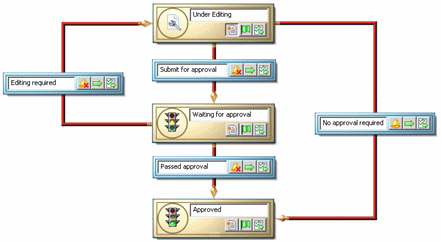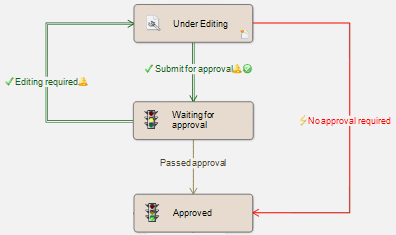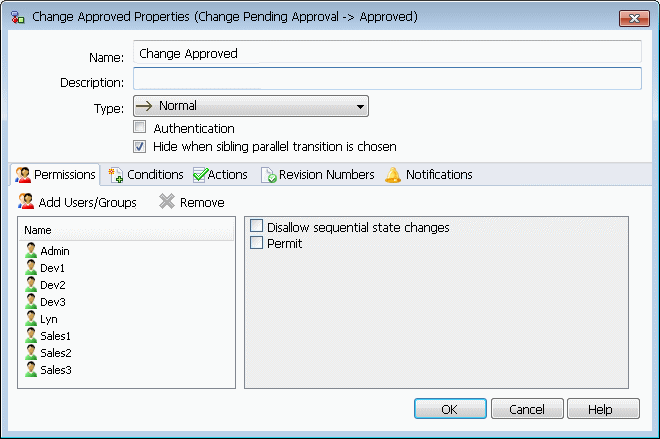The Workflow Editor user interface has been updated to make it easier to navigate large workflows.
The appearance and layout of workflow state and transition objects has been simplified.
Workflow Editor in Enterprise PDM 2012

Workflow Editor in Enterprise PDM 2013

New Properties Dialog Boxes
To open both state and transition properties dialog boxes, you click the objects in the workflow map.

Tabs have been added to the dialog boxes to provide easier and more consistent access to all settings.
Both the state and transition properties dialog boxes include:
- A Permissions tab, which replaces the permissions task pane from previous versions of Enterprise PDM.
- A Notifications tab, which provides access to the Folder Notification dialog box of the redesigned Notifications Editor.
- A Revision Numbers tab, which replaces the Increment Revision Command section of the state properties dialog box and the Change revision counters option of the transition properties dialog box.
Transition properties dialog boxes also include Conditions and Actions tabs.